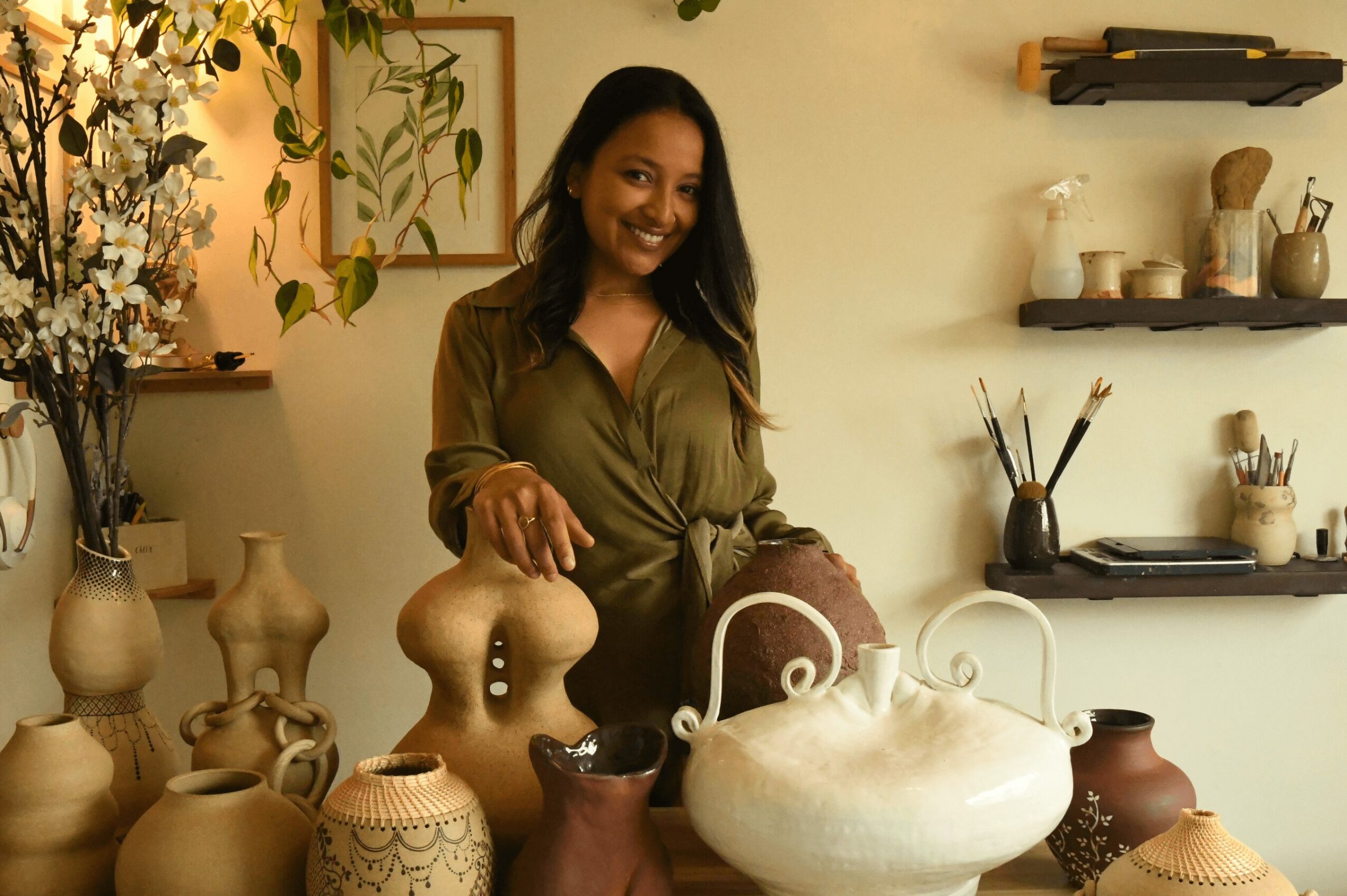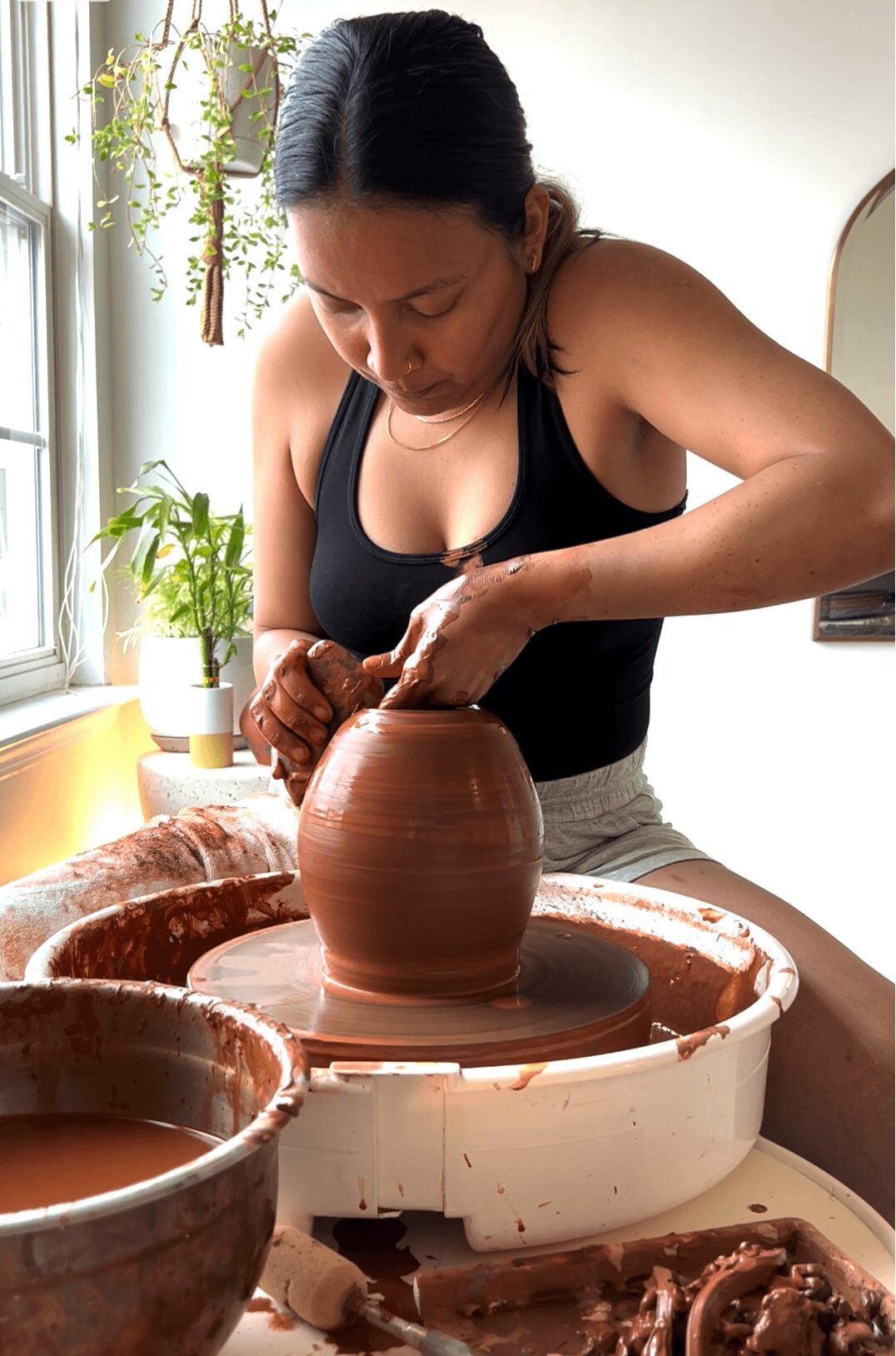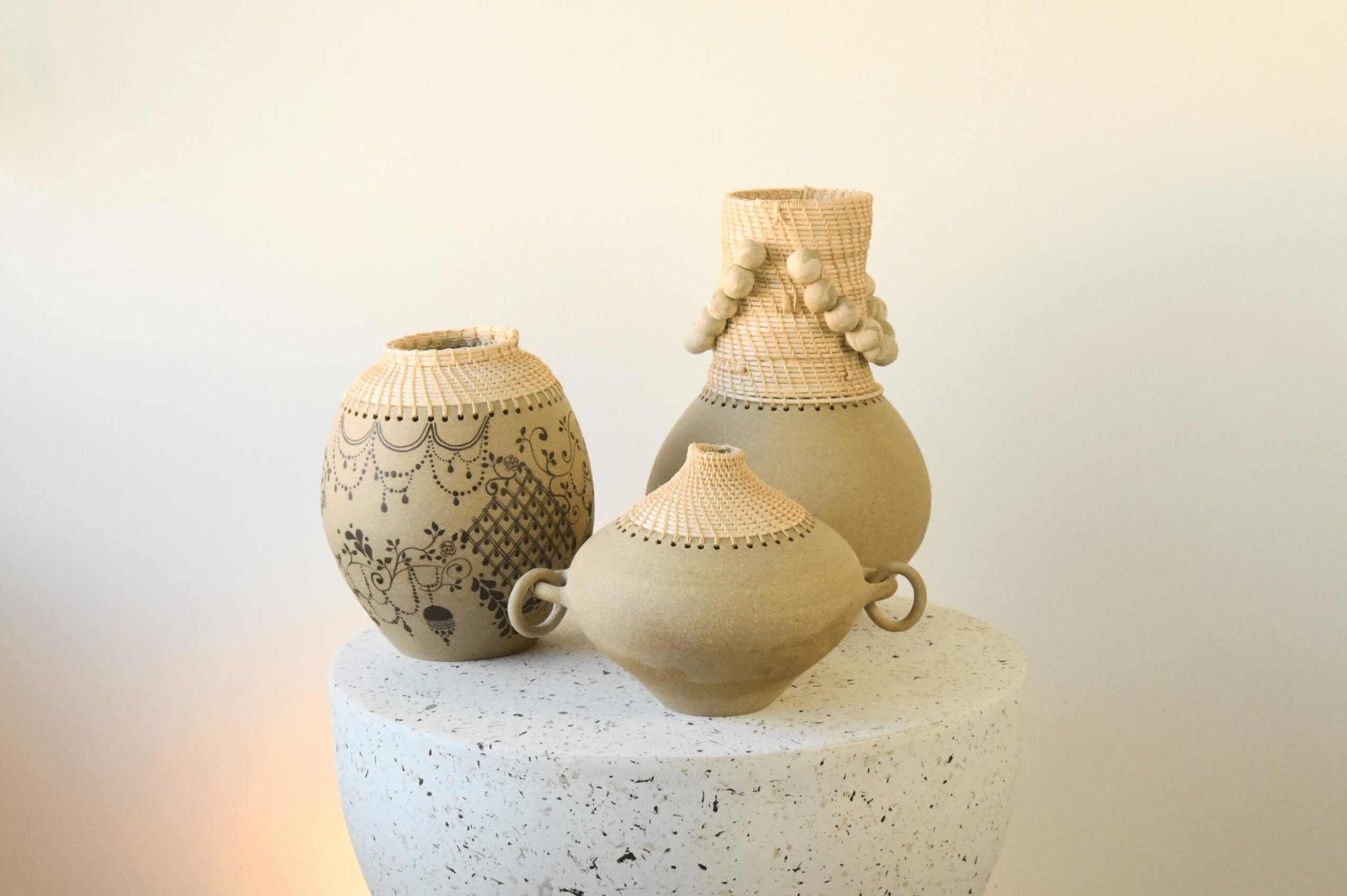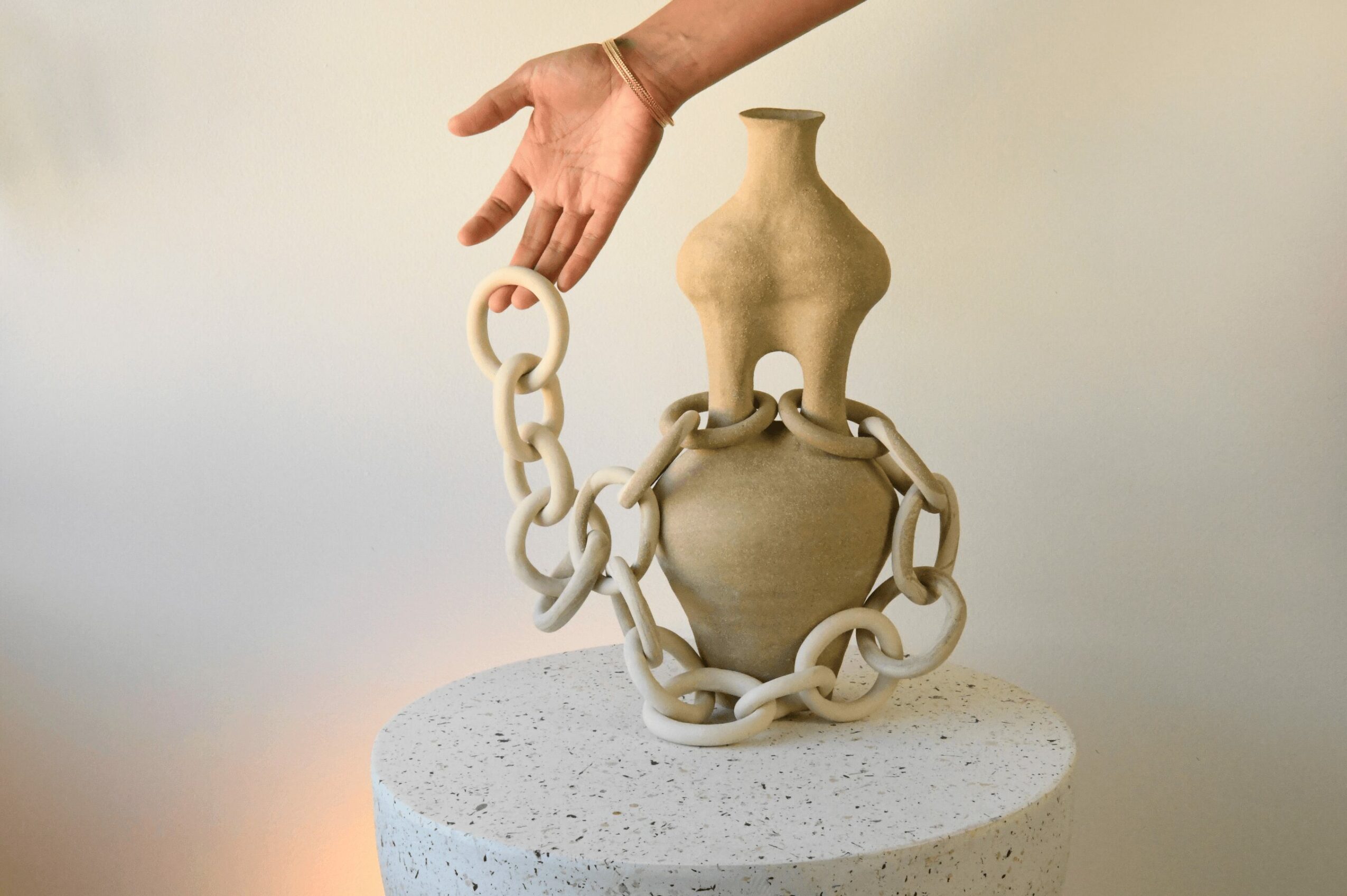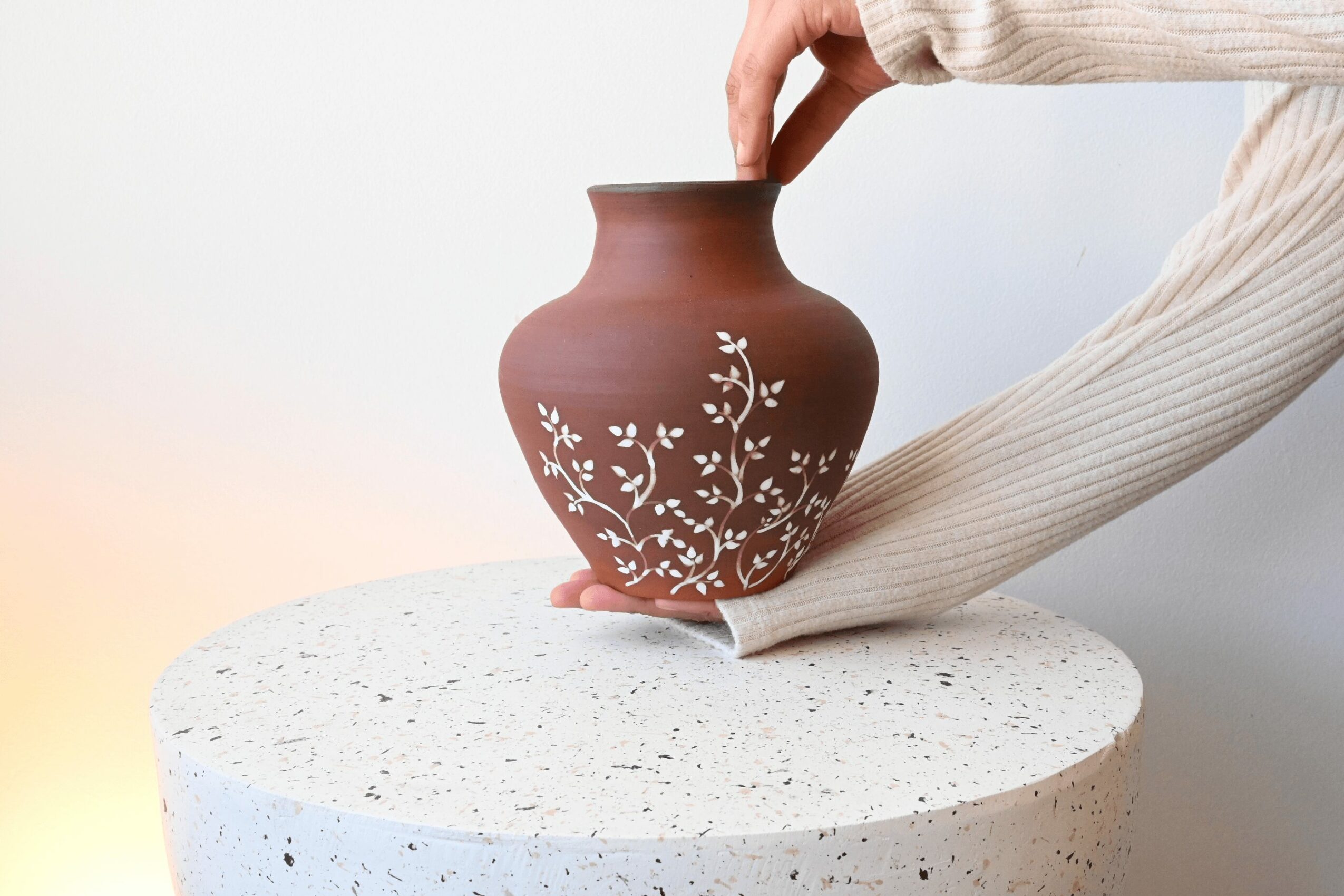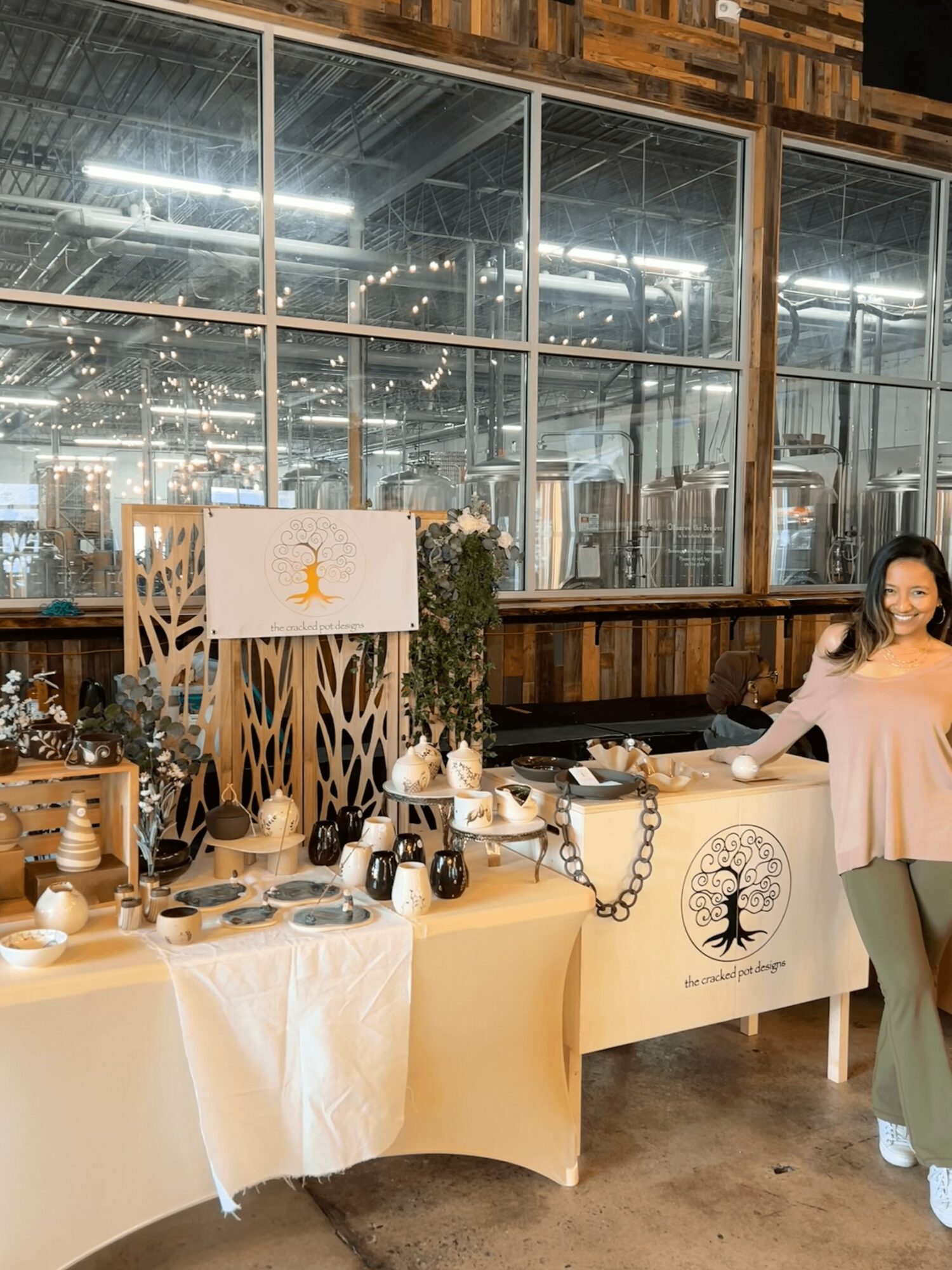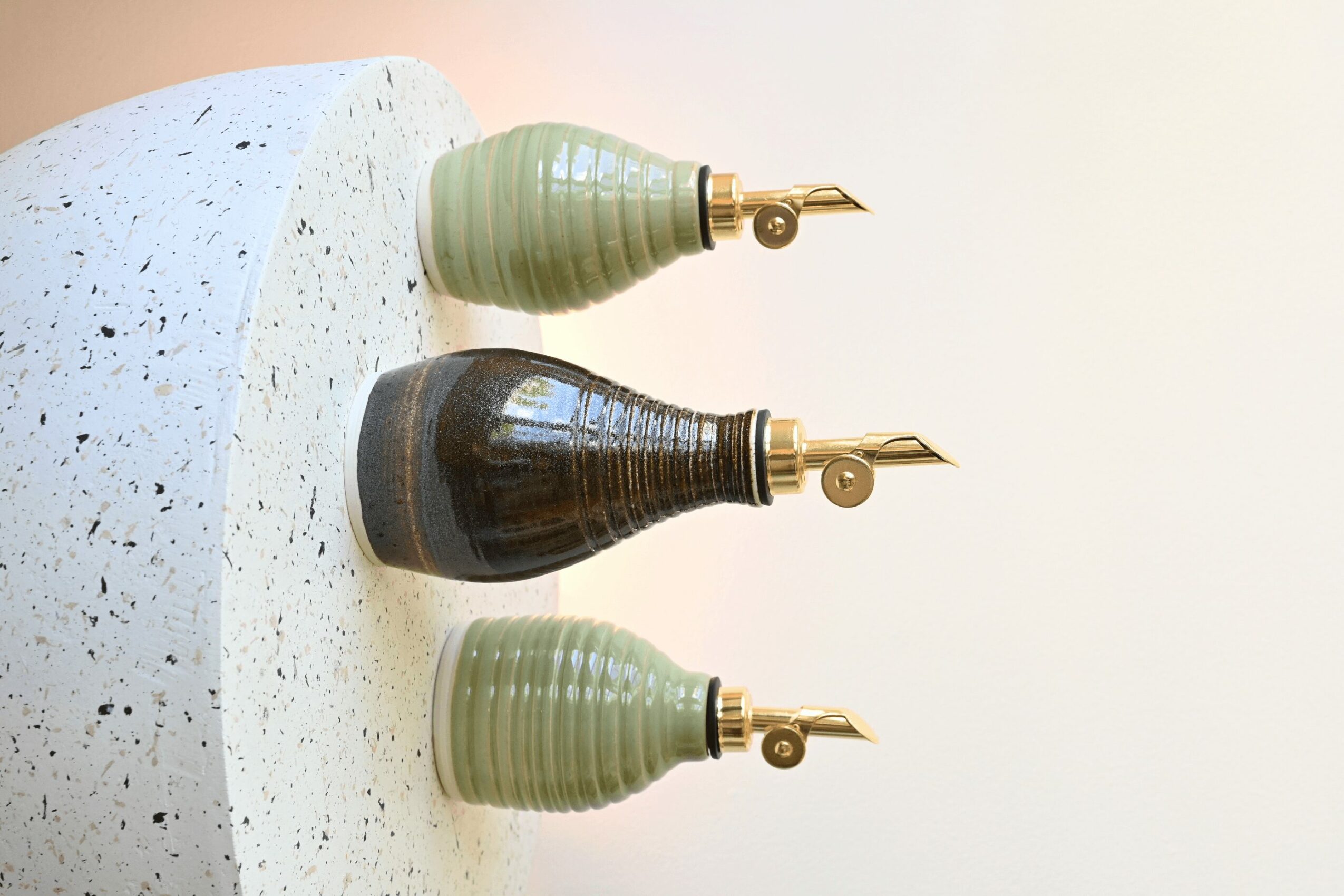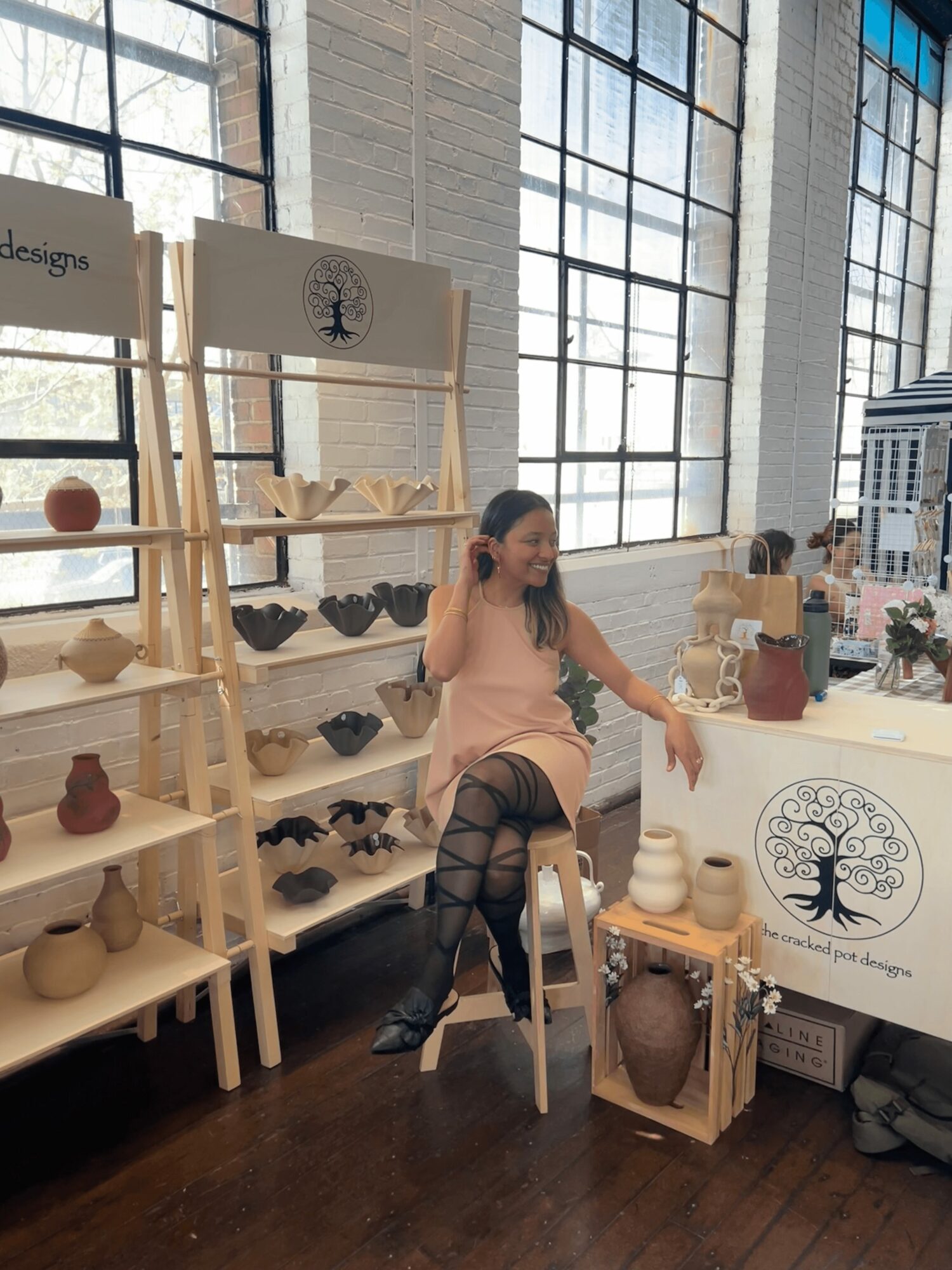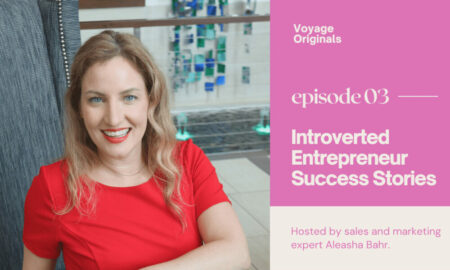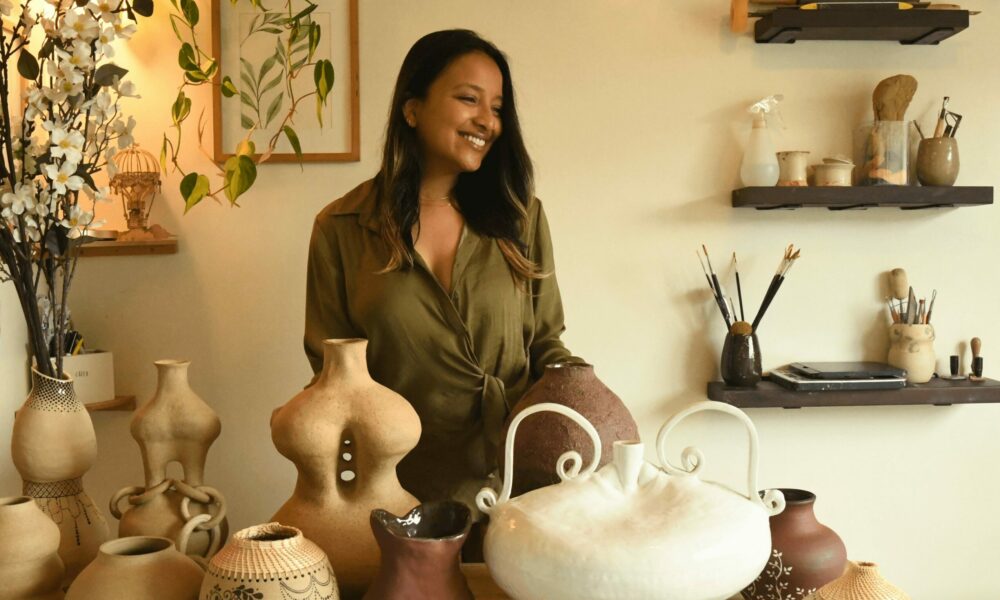

Today we’d like to introduce you to Tayaba Ahmed
Hi Tayaba, can you start by introducing yourself? We’d love to learn more about how you got to where you are today?
My journey into ceramics was really a search for my passion. Growing up, I always had an entrepreneurial spirit, but it wasn’t until I got my hands on clay that I was able to fully articulate what I wanted for my future.
I had spent the last 10 years working in the software space; all the while, searching for a more fulfilling path. When the pandemic hit in 2020, I looked to art as a way to cope with the chaos around the world. Clay has such healing properties, and being able to mold mud with my own two hands gave me the freedom to manifest my intentions.
Pottery quickly became more than just therapeutic. Being a ceramic artist allowed me to express myself like never before, and I became fully immersed in this artistic pursuit. It may be cliche, but I’d never felt more alive than when I started working with clay. The pandemic was a cruel reminder of just how short life can be, and I wanted to spend whatever time I had doing what I truly loved. At long last, I’d found my passion.
With a clear vision, I left my 9-5 and decided to invest in myself. I carved out a home studio, invested in my own pottery wheel and kiln, and brought the entire production line in-house. Since becoming a full time artist, I’ve attended several markets and pop-up events like Sip Shop Eat and The Atlanta Women’s Expo, and I’ve been privileged to meet so many incredible people who’ve shared their appreciation for my work. I also had the honor of having my ceramic ware stocked on the shelves of The Corner Cup Coffee in Tucker. In January of 2024, I fully launched my online Etsy Shop, The Cracked Pot Designs. Currently, I’m working on a large commission of dinnerware sets for an Atlanta based chef, an opportunity I’m extremely excited about! Ceramics, like any business, is a lot of mental and physical work, so I really cherish the successes and growth I’ve experienced thus far. I have big dreams for my small business, and I hope to be able to share my passion and joy for art for many years to come.
We all face challenges, but looking back would you describe it as a relatively smooth road?
The road has been interesting, but not necessarily smooth. While I’m passionate about pottery, few artists are fortunate enough to be able to create without acknowledging the practical aspects of running a business. I’m no different. One of my handmade ceramic products can take anywhere from 2 weeks to 2 months to make. Each piece I create represents hours, if not days, of designing, throwing, carving, glazing, and reclaiming clay; all with no guarantee of a return on that time investment. Moreover, ceramics can take a heavy toll on the body as it’s a very physically demanding form of art.
Once I’ve made a product, then comes the other crucial part of my job: marketing. In the modern world, it’s not really enough to just make the art. I’ve found that people are curious about the story behind my art, which means that social media engagements, captivating videos and pictures are a necessary step in telling my full story. Outside my online presence, I’ve put a lot of effort into having successful market events; which usually require weeks of preparation. All of this is not to even mention all the truly mundane parts of running a business, like the record keeping, budgeting, and the seemingly endless paperwork.
What makes all that effort worthwhile though is being able to step back and see all the progress I’ve made. Putting in time to engage with people allowed me to build a brand I’m really proud of, and gave me the chance to meet a community of artists that I never knew existed. In addition to the benefit of making sales, going to markets allowed me to create a network of professional contacts that I just wouldn’t have made otherwise. I also feel that the pressures of keeping my inventory stocked up, while not the most glamorous aspect of pottery, continues to push my artistic skills forward. While I might sometimes wish for a smoother road, I genuinely feel the challenges I face are making me a better artist.
Appreciate you sharing that. What else should we know about what you do?
I create decorative and functional handmade ceramic products. You can use clay in an infinite number of ways, so I really like to experiment with the medium. My go-to form is the vase. Something about a vase feels inherently feminine, and I love creating ones with deep curves that really highlight the clay body or any added details.
I pull inspiration from my background as a Bangladeshi-American woman and from my love for nature. Most of my pieces are adorned with intricate henna designs or nature themed drawings. I rarely make the same piece twice, so each vessel has its own mark and unique story. The more confident I became in my style, the more I experimented. I’m really proud of my woven bamboo vases, that carefully weave together clay and bamboo to create a captivating, one-of-a-kind body of work..
In terms of your work and the industry, what are some of the changes you are expecting to see over the next five to ten years?
I think more people are being intentional with what they bring into their home, and therefore are more interested in finding something with a story behind it, and not just to get something unique. I feel that people are more mindful of where and how their products are made. In my interactions with customers, it’s not uncommon for them to ask about the sustainability of my products and the safety of the materials I use. While everyone of course looks for a good deal on whatever they buy, I feel that consumers are increasingly trying to avoid subsidizing business practices with which they disagree. For instance, online market places like Etsy are expanding the ways in which sellers such as myself can be transparent with customers about how their products are made. That transparency can be hard to get from large retailers with obscure supply chains.
Over the next 5-10 years, I wouldn’t be surprised to find the focus on transparency to grow. Just as most people now demand to know what goes into their food, I expect modern consumers will increasingly demand to know the conditions under which their products are made.
Contact Info:
- Website: https://thecrackedpotdesign.etsy.com
- Instagram: https://www.instagram.com/the_crackedpotdesigns/
- Youtube: https://www.youtube.com/@TheCrackedPotDesigns
- Other: https://thecrackedpotdesigns.com
